It’s a given that hydraulic hoses are simply vessels to transfer liquids under pressure, high-pressure hoses and those rated to be used in low-pressure applications are readily available on the market in a wide range of industrial materials.
Hoses are now made of synthetic rubber, thermoplastic or Teflon and other materials and each is used in a variety of industrial applications and vehicle applications from everyday cars to race cars, farm machinery to industrial machinery.
Hydraulic systems have the ability to multiply torque or apply force in a simple way. They can transmit force from an engine to the place where it needs to do the work.
Fluids transmit force effectively because they do not compress. The force that is applied at one end of a hydraulic hose travels to the opposite end of the hose with little loss of power. Changes in size of hose along the way can increase or decrease the force applied at the opposite end.
Norden Hydraulics has:
Stainless steel hoses with synthetic nitrile inner tubes and a stainless steel braid like the 100 Series Speedflow hose,
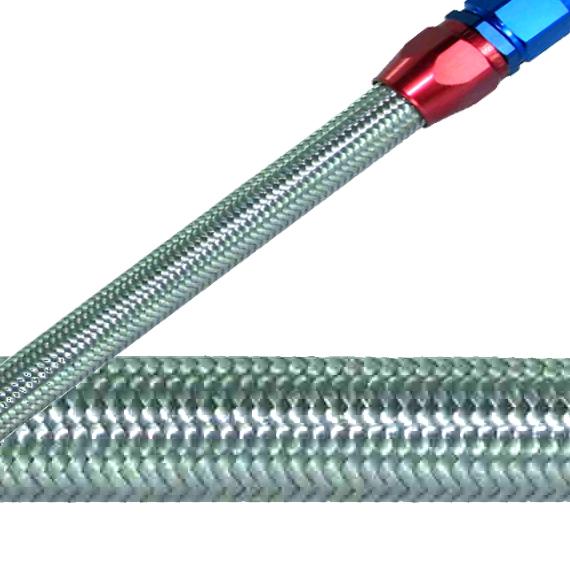
CPE lined hoses with Nomex covers like the 120 Series Speedflow hose,
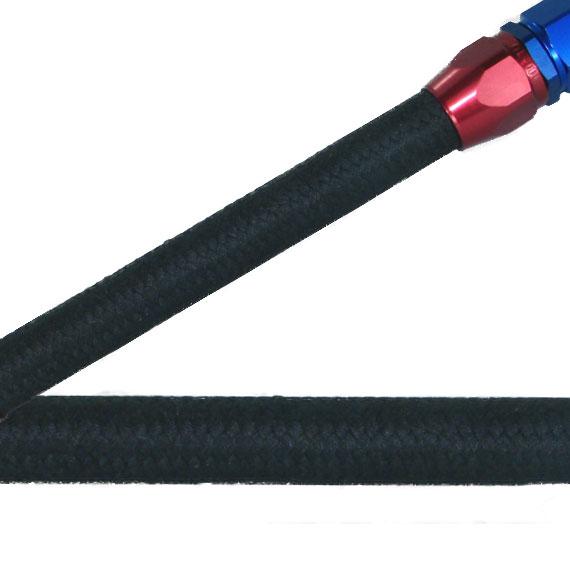
Teflon braided hose made of PTFE with an outer stainless braided cover like the 200 Series Speedflow hose, and
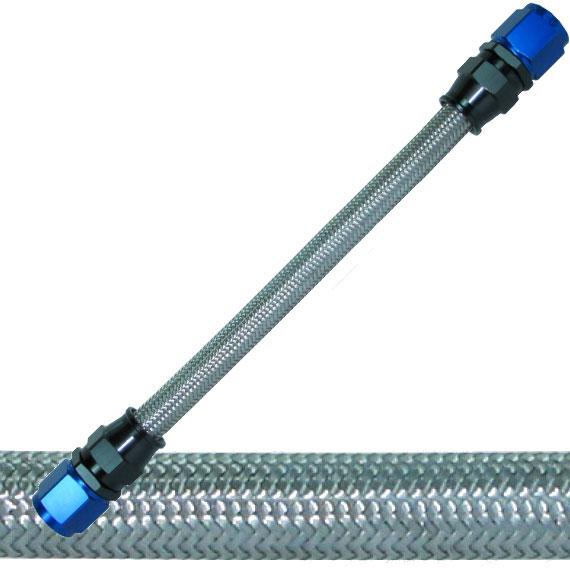
332 and 598 Series Speedflow hoses made of elastomer tuber with a textile braid reinforcement.
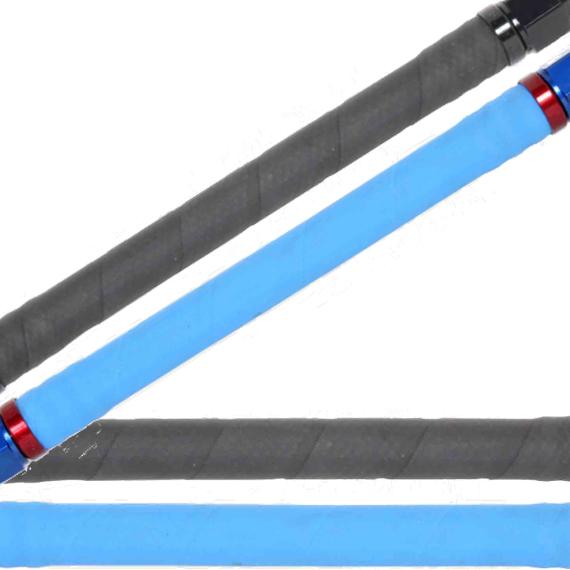
Also in the Norden range are power steering hoses like the Speedflow 490 which is made of synthetic rubber with a textile inner braid wire reinforcement and a textile braid cover.

And for fuel injection uses, Norden has the Gates Barricade fuel injection hose which is specifically made to withstand modern car fuels.
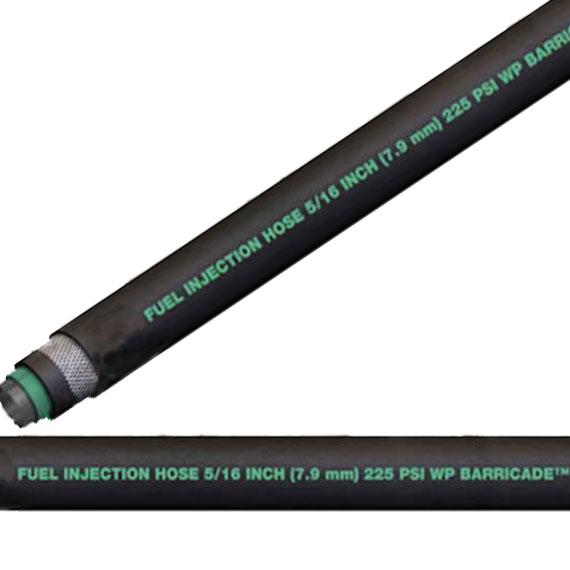
Hydraulic hoses are made in three basic parts – an inner, the reinforcement and an outer shell.
The inner tube carries the fluid, it is reinforced with a sheath of braided wire, spiral wound wire or a textile-based yarn.
The protective outer layer provides protection from weather, abrasion or oil or chemicals.
Hydraulic hoses are designed or custom-made specifically for use in particular mechanical applications. In most cases, hydraulic hoses are designed to be specific sizes, lengths and have custom connectors.
Each hose application has its own parameters and so using the correct hydraulic hose means finding one with the correct dimensions, performance specifications, construction and features.

Add to those parameters the type fluid that runs through the hose as well as the temperature of the fluid and of the environment in which the hose lives - under bonnet temperatures in motor vehicles, especially high-performance motor cars can be very high.
In some situations, the hoses may come into contact with other substances or chemicals that may attack the hose casing so that’s something to consider.
Another thing to consider is whether you need an anti-static hose for applications using flammable liquids and a static charge may be generated and then ignite the fluid.
Hydraulic hoses are not permanent, there are so many factors that impact upon the lifespan of a hydraulic hose.
Flexing the hose too much, twisting it, kinking, stretching, crushing or scratching the surface can reduce the hose life, and simply age can deteriorate a hose to the point of bursting.
Too low or too high operating temperatures will break down hoses, as will sudden sharp rises or drops in internal pressures.
Using the wrong size, type or weight of hose can also cause them to break down.
Hoses should be replaced before they fail, in many cases, this is a safety issue with hydraulic heavy machinery, brakes or other critical machinery.
If hoses show any signs of swelling, cracking, blistering or bubbling this is definitely a telltale and time to change them, but sometimes they show virtually no external signs at all so it’s also important to change hoses as often as recommended by a manufacturer to prevent accidents.
In the case of hoses, size is definitely important - if not critical, so determining the size of the hydraulic hose you need is easy if you’re replacing a hose and you must replace it with the same size as the one that was there.
Hoses generally have a size on the outer shell – along with other specifications – so if it is there and still able to be read that’s the easy way. If not then working out the size is a matter of measuring the inner and outer diameter of the hose with a micrometer or venier calipers.
If you are not just replacing a hydraulic hose and in fact running a new hydraulic system then unless you are a trained tradesperson or engineer, you need to get assistance from someone who is an expert in the area. Talk to one of the trained hydraulic experts at Norden who can put you on the right path to choosing the correct hose and fittings.
Every hose has specific ratings for the types of fluid it is designed to carry, for its working temperature range, and for its pressure limits. Usually, these are printed on the hose or fittings. In some cases, the printed model number on the hose is linked to a specification sheet.
As an example, Norden’s Barricade fuel injection hose has the following information stamped on the outer shell – fuel injection hose (type and use) 5/16 inch 7.9mm (interior dimension - size) and 225 PSI (pressure rating).

Where there is no stamp on the outer shell then you should contact Norden to determine the specifications or visit the Norden website shopping cart which has specification sheets for each hose these generally have sizes, operating pressures, burst pressures and other information.
Hydraulic systems operate under high pressure to drive machinery. Hoses that fail at high pressures can whip about with extreme violence and cause injury. Hydraulic hoses should be checked and replaced according to manufacturer’s recommendations.
Specially designed for use with the Speedflow 100 Series hose ends and constructed of a seamless synthetic nitrile inner tube with an integral stainless steel braid and a high tensile stainless steel outer braid. For use with synthetic lubricants, oils, air, coolant and alcohol including methanol and nitromethane
Lightweight, durable and race proven – made from smooth-bore CPE liner with a Nomex cover. Applications include some fuels, lube, coolant, and air. No special tools are required.
Teflon braided made with a PTFE (Teflon) inner tube compatible with all brake & clutch fluids, oils & fuels. The outer stainless steel braided cover adds fire and heat resistance and gives the hose a high-pressure rating. The 200 Series Teflon Braided Hose is also available with a PVC cover, this abrasion resistant cover will stop the braid rubbing.
This is the AQP Socketless hose with an elastomer tube, textile braid reinforcement and a rough elastomer outer cover. This hose is not recommended for use with unleaded fuels or use in high-pressure applications or suction systems. It is suitable for synthetic lubricants, oils, air, coolant and methanol. 332 has a BLUE cover and 598 has a BLACK cover.
Designed for high-pressure power steering applications with 490 fittings, it is made from synthetic rubber tube with a textile inner braid, a single wire braid reinforcement and a black rubber impregnated textile braid cover.
For use with the aggressive fuel mixtures of today’s modern fuels which can degrade rubber hose. It has a working pressure of 225psi for fuel injection and is compatible with petrol, diesel, biodiesel, E-85, 100% methanol, Ethanol and any gasohol fuels.